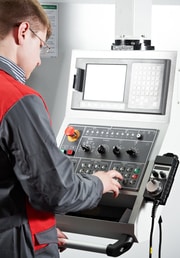How Will Industry 4.0 Impact Students?
Students are our future, which is why we are obligated to provide them with a well-rounded and hands-on education experience with lots of room for expressionism. This way, students can see higher potential for professional and communal success. The future is gunning to mesh tech with reality – how can we be as efficient as helpful?
When the time comes, future employers will be thirsty for diverse minds ready to problem-solve, especially those who have been trained amidst the industry’s current transition. Since 2011, we have been undergoing the world’s Fourth Industrial Revolution – also known as Industry 4.0. That’s serious stuff, huh?
Fourth Industrial Revolution
This is the time innovators create world-changing gadgets, business models, workflows, systems, and materials to set us up with better circumstances. Ultimately, this pushes civilization forward. The last time this happened was between 1950 and 2002, which is when robots and PLCs were invented.
In short, an “industrial revolution” is any mass transition into new manufacturing processes. When all is said and done, the way we work will have been improved, as well as what we gain from our work. Along with that, we will have created more resources for ourselves.
Industry 4.0.
The primary focus of Industry 4.0 has been inter-connectivity. Electronics, IT, robots, and PLCs were created by Industry 3.0 innovators, which is what modern innovators are
optimizing. Resulting from this, we will have a workforce that includes higher-level automation driven by artificial intelligence and an integration of cyber-physical systems across both global and domestic supply chains.
Here’s another example. After the First Industrial Revolution, machines and tool were created. This reduced and eliminated animal labor. However, Industry 1.0 took place between 1760 and 1830, so the most advanced machines created at the time were driven by steam and internal combustion engines.
During the Second Industrial Revolution, innovators were eager to improve the current workforce’s efficiency and productivity. So, innovators built the world’s first railroad systems, telegraph lines, and assembly lines. This made shipping and physical labor a lot easier. Furthermore, innovators of 1870-1914 also introduced new materials such as stainless steel and plastics.
What does every innovator have in common? Education. Knowledge is power. A lot of the bright ideas we use today were developed from an innovator’s thought to make a system better. This is why expressionism is an important element of education. Let their thoughts roam free and allow them to build systems to work around their innovative roadblocks.
Students are our innovators-in-training. Parallel to Industry 4.0’s progression, STEM curricula has taken off at all-time-highs. In other words, there is no question Industry 4.0 will have plenty of room for your child to partake. The question is: what will they create?
Check out this infographic below to learn more about Industry 4.0 and how it can help shape your child for the future.





